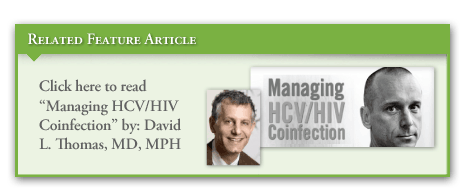Research suggests that the epidemiology of HIV/AIDS in rural areas of the United States differs from that of urban and peri-urban areas. Small studies have found that sub-populations in rural areas may be less likely to receive quality care and achieve optimal HIV outcomes when compared with individuals living in urban areas. However, generalizing HIV/AIDS care in rural areas may be misguided because each has its own unique characteristics. Concern is growing in the research community that patients in non-urban settings may be underrepresented in studies with regard to demographics and healthcare utilization. Trials typically draw more from urban populations because of easier access to participants and because HIV specialists and academic centers tend to be located in urban areas.
Seeking Better Representation of HIV Care
A study published in the August 2011 issue of AIDS Care examined the impact of geographic location—specifically urban, peri-urban, and rural locations—on clinical HIV outcomes using data from a multistate cohort. “The main caveat of the study is that the vast majority of rural and peri-urban patients actually received their care in urban areas,” says Lucy E. Wilson, MD, ScM, lead researcher of the investigation. “These patients may be very different from those who received all their HIV care in rural areas.”
The authors found that people who were living with HIV/AIDS in rural and peri-urban settings and traveled to urban areas for their care received a high level of appropriate HIV care and had similar rates of AIDS-defining illnesses when compared with patients living in urban areas. For the study, receipt of appropriate HIV care was defined as appropriately beginning highly active antiretroviral therapy (HAART), achieving HIV virus suppression on HAART, and receiving prophylaxis for opportunistic illness, if needed.
Notable Differences in HIV Care
When reviewing medical and pharmacy utilization, Dr. Wilson and colleagues found that urban patients were more likely to have at least four outpatient visits per year (Table 1). “This frequency of visits is consistent with national HIV treatment guidelines at the time of this study,” explains Dr. Wilson. “The rural and peri-urban patients in our analysis were less likely to have the recommended number of outpatient visits per year. This finding suggests that there may be an access to care issue.”
Statistically significant differences were found between locations for outpatient visits per year for all patients and for those on HAART. “It’s likely that one reason the rates were higher among urban patients is that those who are on HAART require close monitoring for adverse events and for treatment response in order to prevent development of resistance,” Dr. Wilson says. “Closer patient monitoring may be easier for those living in urban areas.” She adds that although the difference for inpatient admissions across locations was almost statistically significant, it remains unclear whether the study was able to capture all inpatient admissions for those living in the most remote areas. It is possible that patients may not come into the urban areas for their medical inpatient admissions.
Although not statistically significant, a surprising finding in the analysis was that patients in urban areas were less likely to be on HAART (Table 2). “While we cannot provide an explanation for this finding, we can hypothesize that patients in rural and peri-urban areas who are unable to travel to urban areas for care may differ from those who are receiving care. Urban patients may represent a broader group of individuals who should be further studied to determine what factors are important for receiving appropriate HIV care.”
Those who were least likely to receive HAART, in general, were African Americans and injection drug users. “Cutting across all geographic areas, these two groups still appeared to struggle with access to care issues,” Dr. Wilson says. Patients who did receive HAART were more likely to have at least four outpatient visits per year, be aged 40 or older, be Hispanic, live in an urban location, be uninsured, or be a Medicare or Medicaid beneficiary.
Future Directions to Improve HIV Management
Although the study by Dr. Wilson and colleagues suggests it is possible for patients in non-urban settings to receive quality HIV care, the apparent lower outpatient utilization of HIV care among rural and peri-urban patients highlights that barriers still exist. This appears to be particularly true among African Americans and injection drug users. “Overcoming these barriers requires improved HIV education for both patients and providers in non-urban areas,” Dr. Wilson says. “Future studies should explore strategies for eliminating access barriers so that we can improve healthcare quality and outcomes.”




 JonN
JonN